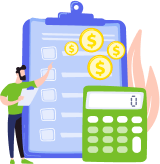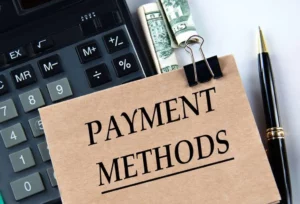Procurement professionals have always dealt with complex datasets, from internal spending patterns to external market conditions and supplier profiles. As the volume of information grew, so did the chances of human error, which pushed teams toward procurement automation. At first, this meant simply moving away from spreadsheets. Later, tools like robotics process automation (RPA) helped automate routine tasks such as invoice generation and approval. Today, procurement is a mix of tech and human expertise: while systems handle repetitive operations, specialists focus on strategy, contract management, and supplier relationships.
The rapid advancement of machine learning (ML) and artificial intelligence (AI) has transformed how organizations manage procurement. These technologies enable smarter, centralized workflows that streamline operations and minimize human error. In this post, we’ll explore the upsides of procurement automation and how to implement it effectively.
What is Procurement Automation?
The use of digital technologies to streamline and manage the purchasing process refers to procurement automation. Modern firms are implementing specific apps and tools throughout the entire cycle, from the moment of ordering to payment for products and services of various complexity.
Some firms utilize procurement automation to decrease working hours spent on labor-intensive processes. Other companies combine automation with advanced tools, including AI and database analytics, to provide spend management and assess counterparty risks, ensuring stable activity.
Procurement apps suggest various functions, e.g., virtual catalogs, automation of primary procedures, approval routing, electronic signatures, and synchronization with an accounting system and enterprise resource planning (ERP) solution to ensure smooth purchasing activity.
A basic stage of procurement automation is procure-to-pay (P2P). It covers all stages, including purchase requests, counterparty search and evaluation, virtual purchase order (PO), receipt control, approval, and payments. P2P automation boosts productivity, lowers inaccuracies, and ensures visibility into purchasing and standardization of main steps.
Benefits of Automating Procurement
An automated procurement process offers several powerful profits. It eliminates routine tasks and frees up time previously spent on accounts payable (AP) to address more significant issues. Firms that adopt such a process may expect the following operational improvements:
- Reduced inaccuracies and fraud risk. Compliance checkpoints decrease fraud exposure and risk. With a clear record of every procurement stage, your firm is audit-ready and compliant year-round.
- Faster approval cycles and order execution. Procurement process automation decreases cycle times in P2P by speeding up approval workflows and increasing operational efficiency. Online submission and approval of PO, automated invoice handling, and virtual payments cut processing period and overall procurement cycle.
- Optimal efficiency. Automation raises productivity by enhancing workflows, minimizing manual labor, and cutting administrative expenditures. Purchasing experts may spend fewer working hours on routine activity, including data entry, routing, and processing payment documents. They now have more time to perform strategic tasks, including improving relationships with counterparties, negotiating contracts, and optimizing inventory management.
- Cost savings through better visibility and tracking. By implementing and using purchasing policies, an accelerated P2P process cuts costs by eliminating overpayments due to invoice inaccuracies. This means the money spent corresponds to the firm’s objectives and allows for rational budget allocation.
An automated procurement process ensures the accompanying procedures comply with fixed norms and hierarchies, helping firms to operate within the legal framework to perform strategic tasks, including improving relationships with counterparties, negotiating agreements, and optimizing inventory management.
Components of a Procurement Automation System
There are many platforms to provide procurement automation, and each has its pros and cons. You may select the system that suits your firm best. Let’s analyze the standard steps and functions of such solutions.
- Purchase requisitions and approvals. Employees with automation applications may generate, approve, and monitor purchasing requests with several clicks. They may share information with decision-makers and start a discussion to improve the procedure of submitting and approving purchase requests.
- Counterparty selection and bidding. You will have optimal vendor relationships in your firm’s supply chain if you have a transparent and organized purchasing process. This way, you may select and continue to interact with reliable counterparties and avoid unnecessary involvement of additional vendors, which will make interaction with counterparties simpler and more comfortable.
- PO and invoice matching. The purchase order system contains automated workflows for sending PO to approvers, eliminating troubles and accelerating the approval procedure at various stages. Such a PO is vital to provide future comparisons with invoices. Only then you may be sure you are paying for the products shipped.
- Payment processing. This activity involves repetitive, rule-based tasks that can be performed with minimal human intervention, decreasing mistakes and speeding up transactions. Innovative technologies, such as RPA and reliable payment gateways, ensure process efficiency through payment information verification, operations processing, and real-time record-keeping.
- Inventory control and reordering. Automation of inventory management allows you to keep inventory in stock when needed, decreasing the risk of shortages or overstocking. Modern systems, including specialized software, IoT (Internet of Things) sensors, and predictive analytics, provide data-driven decision-making on what, when, and in what quantities to order. It reduces human effort, increases inventory accuracy, and decreases the load on the cash.
With advanced procurement software, you can complete all the steps in one place and finish the P2P process.
Implementation Process
A structured approach to adopting procurement automation is key to a firm’s success in this area, as well as its ability to reap the profits that such a procedure offers. Remember that interaction with all stakeholders during the adoption of an automation project should occur at each of the above stages.
Selecting the optimal software
This choice involves finding software that meets your personal business needs but is structured enough to form an effective workflow to cut expenditures and increase productivity. When selecting a solution, we recommend paying attention to the following functionality:
- Flexible configuration to form optimal workflows and personal settings, considering the specifics of your firm.
- Automatic general ledger (GL) coding to avoid accounting errors.
- The ability to work with hundreds of counterparties with features such as favorite orders and activity history.
- Dynamic systems for different user levels, needs, and roles.
- Complete information about contracts for compiling statements and managing vendors.
The correct choice of software will free your employees from repetitive procedures and unnecessary invoice research procedures.
Mapping your actual procurement workflow
Advanced mapping is a matrix of information about vendors, analyzed through graphs and charts. It is a visual interpretation of your firm’s expenditures that may be a valuable data source. Such mapping lets you define spending classes, leading counterparties, and risks and assets to raise purchasing efficiency. This visual presentation analyzes the whole, providing a detailed view according to the purchasing segments utilized.
Integrating with your accounting application
Data accuracy and process efficiency are ensured by seamless synchronization with ERP, Material Requirements Planning (MRP), and accounting solutions. This synchronization allows automated procurement systems to quickly access accurate master data, including contract numbers, counterparty data, and prices. When attempting such integration, you may encounter compatibility troubles or failures in actual jobs. To solve this problem, select solutions that suggest dynamic synchronization options. Collaborating with IT experts to develop a staged integration project can simplify the transition, preventing failures.
When adopting procurement automation, it is vital to keep database protection and compliance in mind in the app you choose. Ensure your software complies with actual restrictions and industry standards. Also consider scalability to match the scales of your firm and dynamic needs.
Best Practices for Success
Procurement automation is a vital element of risk mitigation, raising the safety and continuity of your purchasing processes. Let’s examine several recommendations to help you successfully interact with counterparties.
- Centralized policy and roles. Standardized ones are the basis of effective purchasing and payment procedures. They create innovative practices and clear instructions to perform each stage of the procurement cycle. Distribution of roles allows you to define the responsibilities of each team member, ensuring that they adhere to the same algorithm. Check that your procurement policies are aligned with strategic goals and objectives.
- Vendor onboarding and evaluation. Before you start sourcing and attracting a new supplier, it is critical to stop and think about whether you are sure that the counterparty will not become a burden. Interaction with suppliers is associated with several risks, including violation of the shipping period, poor quality, information security issues, etc. A thorough risk assessment will help you define potential problems early on before they develop into costly failures.
- Regular control and reporting. Scheduled internal audits are necessary to evaluate and monitor new and improved procedures. Select KPIs that align with the overall purchasing tactic and set clear objectives and benchmarks based on industry norms and historical parameters. Establish a schedule for reporting KPIs to key stakeholders, including procurement managers, finance specialists, and counterparties. Typically, the list of performance indicators includes cycle time, management expenditures, supplier performance, etc.
We recommend concentrating on teaching and consulting employees to boost the profits of procurement automation. Research new approaches and tendencies in purchasing to remain competitive. Regularly track and update your procedures to ensure they are in line with your business aims and advanced practices.
Closing
Your firm can benefit greatly from utilizing procurement automation. It optimizes procedures and provides strategic advantages in interactions with counterparties and budgeting. If you don’t know where to start, we recommend that you contact BooksTime to get a consultation. Our specialists will help you select the correct instruments, organize the processes of the procurement department, and help you adapt to technological advances. Such an approach allows your firm to maintain efficiency and competitiveness in an evolving sector.


















